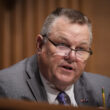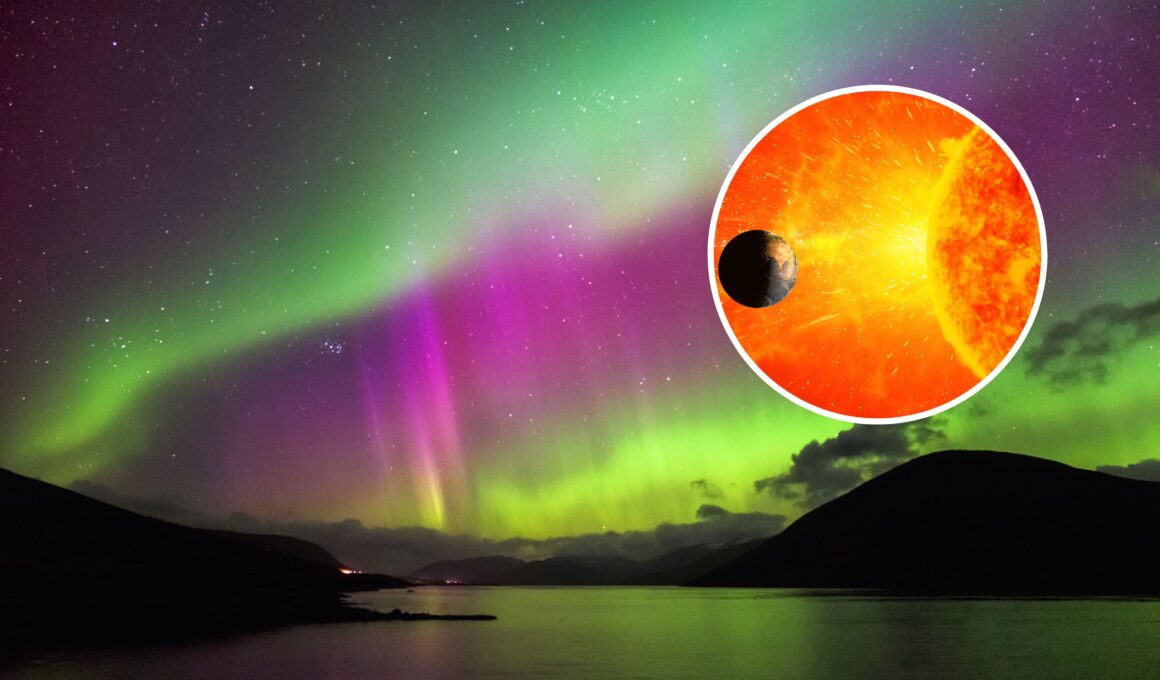People across the northern U.S. states may be treated to a glimpse of the northern lights tonight as solar storms slam into our planet.
A train of coronal mass ejections (CMEs) from the sun are about to collide with our magnetic field, sparking G2-class geomagnetic storms in our atmosphere. This may result in auroras being seen as far south as New York and Idaho.
“A number of CMEs have been associated with the increased activity and at least four of these have anticipated Earth-directed components, with possible arrivals beginning Tuesday on into Thursday and geomagnetic storm watches were issued accordingly: G3 for 30 Jul and G2 for 31 Jul and 1 Aug,” NOAA’s Space Weather Prediction Center said in a forecast on Monday.
Geomagnetic storm watches are now out for July 30th to August 1st due to a number of CMEs (coronal mass ejections). For additional information, see the related story at https://t.co/9VAtkQfmmk… and continue to follow https://t.co/YLUbTRMxS6 for latest info and forecasts. pic.twitter.com/LY7C7Bmk9K
— NOAA Space Weather Prediction Center (@NWSSWPC) July 29, 2024
The forecast G3-class storms yesterday didn’t quite come to fruition, however, as only G1-class storms were seen to actually occur, despite us being hit with a “cannibal” CME.
CMEs are enormous clouds of solar plasma flung out from active regions on the surface of the sun, usually triggered by the dramatic realignment of magnetic fields. These CMEs carry fragments of the sun’s magnetic fields, as well as charged particles, and if heading toward the Earth, spark powerful geomagnetic storms as they interact with our planet’s magnetic field.
These geomagnetic storms cause the charged particles of the CMEs to be funneled toward the atmosphere near the poles, where they react with oxygen and nitrogen to create the auroras. More powerful storms will result in the auroras appearing further toward the equator.
Geomagnetic storms are typically scaled using the G-scale, which ranges from G1 to G5. G1 storms can result in weak power grid fluctuations, minor impact on satellite operations, possible minor auroras at high latitudes; while G5 storms can cause widespread power system problems, potential damage to transformers, satellite navigation degradation, and auroras visible as far south as Florida and Texas.
The last G5 storm occurred on May 10 this year, where the northern lights were seen across all 50 U.S. states, but, before that, one hadn’t been recorded since 2003.
Cannibal CMEs are formed when multiple CMEs are fired out of the sun in succession, and one overtakes another, combining into a larger and more powerful CME. This is exactly what happened over the weekend, leading scientists to predict that G3 storms would occur on July 30. However, only G1 storms were actually seen.
This may have been because the CME’s magnetic fields were pointing in the wrong direction, and did not connect with the Earth’s magnetic field in a way that caused major disruptions.
It is rather difficult to predict exactly how powerful a geomagnetic storm will be, as the magnetic field of a CME is very hard to measure before it gets close to us.
“As Mark Twain said, ‘Making predictions is hard, especially about the future’,” Martin Connors, a professor of space science and physics at Athabasca University in Canada, told Newsweek. “The magnetic field [is] very hard to determine in advance,” he said. “The magnetic field is the wild card until it is directly measured less than one hour travel time upstream.”
Aurora low on the northern horizon – as captured from NWS Goodland during the late evening on Monday July 29 and very early morning on Tuesday July 30, 2024. Note: this video is a series of 30s exposures at ISO 800 (i.e. wasn’t visible to the naked eye). #kswx #cowx #newx pic.twitter.com/vmjby3YE96
— NWS Goodland (@NWSGoodland) July 30, 2024
Despite last night’s lackluster G1 geomagnetic storms, some weak auroras were spotted in Kansas, and captured on camera—but couldn’t be seen with the naked eye— in Arizona. As more CMEs slam into the planet today, the forecast G2 storms could bring with them more stunning northern lights.
Do you have a tip on a science story that Newsweek should be covering? Do you have a question about the northern lights? Let us know via science@newsweek.com.
Uncommon Knowledge
Newsweek is committed to challenging conventional wisdom and finding connections in the search for common ground.
Newsweek is committed to challenging conventional wisdom and finding connections in the search for common ground.







